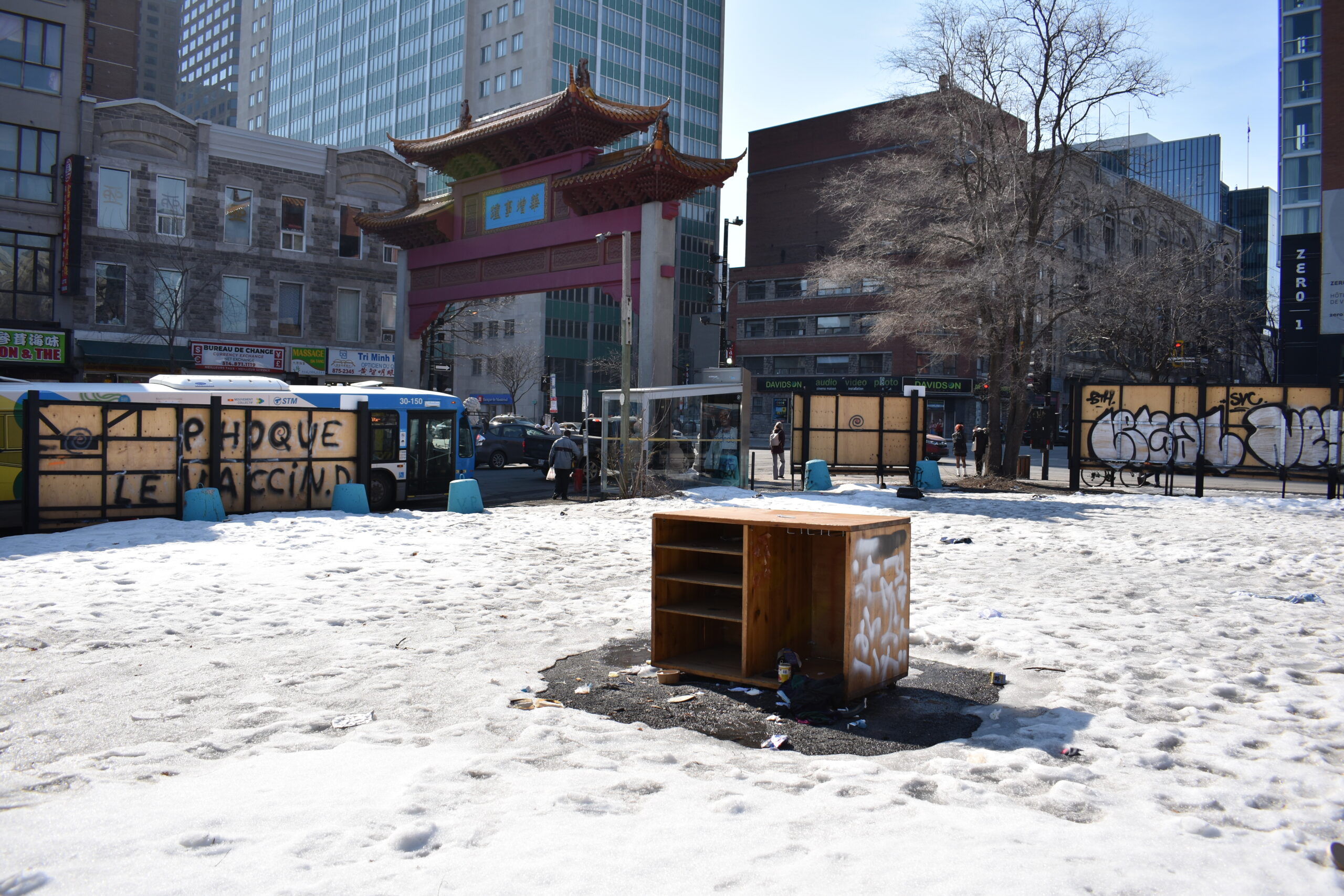From cloaking the majority of Chinatown to possible rent hikes, community members voice their concerns over the rail project
The planned REM de l’Est station is of concern to many community organizations in Montreal’s Chinatown. The station is to be constructed on a vacant plot of land on the corner of René-Lévesque Blvd. and St-Laurent Blvd. Advocates fear that the project will dwarf the already dwindling cultural hub.
CDPQ Infra released the plan for the $10-billion light-rail project to connect downtown Montreal to the city’s east end. Advocates say that the plan proposed by CDPQ Infra does not provide fluid integration of the station with the current infrastructure in Chinatown, cloaking the neighbourhood from the rest of Montreal.
Chinatown Working Group (CWG) member Donny Seto fears that this project will hinder Chinatown’s evolution. “We don’t want a mothball Chinatown, we want to make sure to grow it as a cultural site and a heritage site.”
CDPQ Infra released their first iteration of the REM de L’est project last year, which was met with criticism from community organizations. CWG sent a letter to CDPQ Infra voicing their concerns regarding items that were listed on the project. The newly released design plan did not only disregard the concerns of the CWG, but CDPQ Infra never replied to the aforementioned letter.
“Many of the same concerns we had then are still true now. Many of the changes that the CDPQ made to the REM line have been basically beautification and some reinforcement in terms of greenspace. Not much of the design has changed,” Seto said.
CWG would like to have a voice at the table when discussing potential changes to the project. One of the changes to the track the CWG wants to propose is for the line to continue underground and resurface past Chinatown to preserve the community’s historical significance, all while avoiding being shaded by the proposed train infrastructure. “If it’s built the way it’s designed right now, the northern part of Chinatown from Jeanne-Mance all the way to St-Laurent will be completely walled off,” Seto explained.
The two vacant plots of land reserved for the project are currently privately owned. Despite the community’s granted heritage protection status from the Quebec government, construction has been granted to the site. Community members like Winston Chan, a member of the Inclusive Revitalization: Present and Future of Chinatown committee, noted that the community has proposed different usages for the land at an action plan consultation hosted by the city of Montreal.
“The community asked for the remaining lot to have either affordable housing, a cultural centre, or a place to help independent small merchants,” Chan said. Participants of the meeting hosted last June listed both vacant lots and buildings, as well as a portion of the neighbourhood hemmed by large urban barriers, as concerns at the consultation.
In a statement sent to The Concordian, the city of Montreal established that the vacant land does have heritage protection status by the Quebec government; however, the government has granted construction on the land. “[Both plots of land] are part of the National Monument protection area and certain works are subject to authorization under the Cultural Heritage Act (LPC).”
The primary concern for business owners and tenants alike, who spoke on the condition of anonymity with The Concordian, was that they are at the mercy of drastic rent price hikes and increasing land costs if the station is constructed according to the current plans.
Chan believes this will impact many vulnerable members of the community.
“Most of Chinatown’s residents are senior citizens, most of them are of Chinese origin and would not be able to afford an increase in real estate value. It would also affect the merchants, the ‘mom and pop’ shops as well,” Chan said.
Chan and organizations like the CWG don’t want history to repeat itself and cause displacement, including diminishing community size, something they’ve already encountered in the latter portion of the 20th century. “There was already a lot of land that had been affected in the area. Plans like [the] Ville Marie highway, Palais des congrès, they had also built the Guy Favreau Complex and the Desjardins Complex. It affected one third of the land and removed 80 per cent of the people there. There’s not much left,” said Chan.
On March 17 the CDPQ Infra delayed the project due to environmental complaints from multiple organizations including the city of Montreal. More details are yet to come.
Photo Courtesy of Gabriel Guindi




